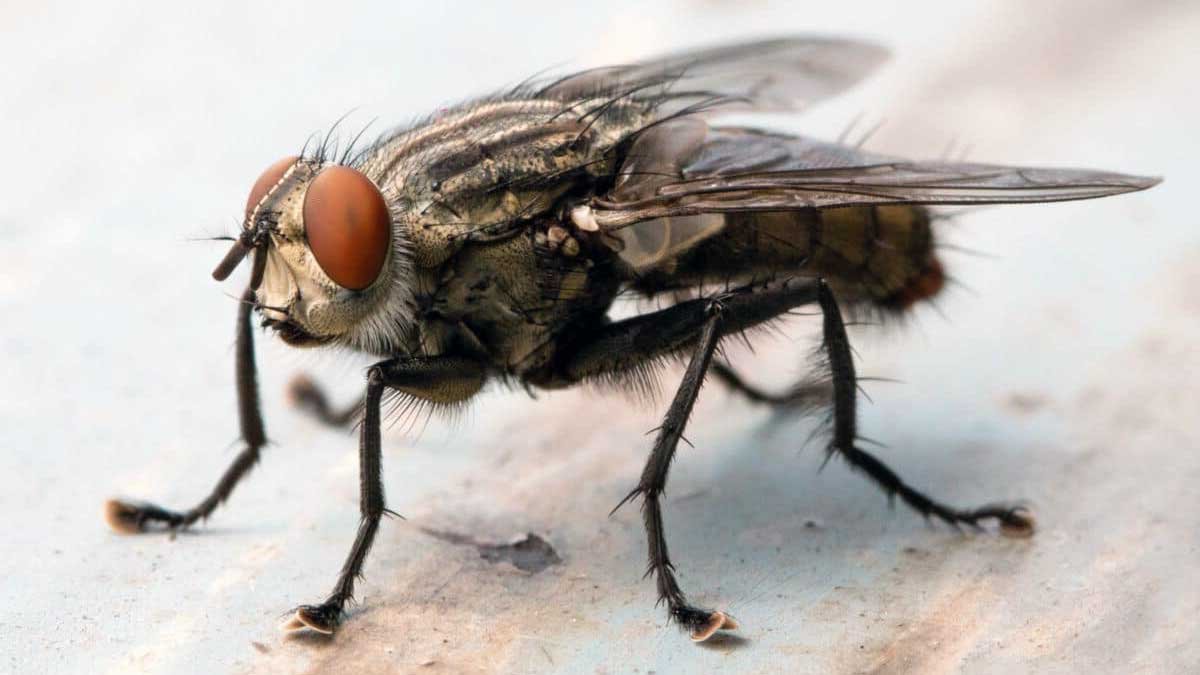Professional Cluster fly Control in Gloucester and Cheltenham
(Pollenia rudis)
Cluster Fly Removal Services
About Cluster Flies
Cluster flies are about 7 mm in length and can be recognised by the distincivet lines they have behind the head. They also have short golden-coloured hairs on their thorax, and irregular light and dark grey areas on the abdomen. Unlike blow flies, cluster flies are typically slow-moving. Cluster flies are a nuisance and a common pest, especially in rural areas where a property is surrounded by green fields. This is because cluster flies are a parasite of earth worms. They are known to infest properties and a property’s roof space in the Autumn months as the temperature begins to drop.
Identifying an Infestation
Locating if you have a cluster fly infestation is not difficult. If they are hibernating in your loft space, they will often erratically fly into you when you are doing an inspection for them, as they are very active under lighting conditions. If the cluster flies are hiberating in the living areas of your property, you will often find them hiding behind curtains, doors and the backs of furniture, where they like to hide to avoid being disturbed.
As the temperatures begin to increase in Spring, cluster flies will wake from their dormative state known as diapause, and they will fly towards a natural light source in an attempt to fly back outside to breed. If you have a cluster fly infestation in your loft space, cluster flies can often find their way into your property’s living area, typically throw a light fitting’s ceiling rose, or other gaps between the ceiling. When they do, you will often find them around windows, attempting to get out.
Prevention
Proofing against cluster flies can seemingly be impossible, as they are able to enter a building through the smallest of gaps. The cluster flies are attacted to the warmth of a property, so they will be able to sense the change in temperature and find their way into a properties. If a property’s windows are ajar, they will also find their way through the gap of the window and frame.
ULV Treatment
People often try to treat a cluster fly infestation themselves with smoke bombs and sticky fly tape, but there is only really one effective way of treating cluster flies, and that is to fumigate the affected area(s) using a professional insecticide ULV treatment, which provide both a rapid knockdown and a longer lasting residue, which continues to control these pests for up to six weeks after the treatment has been applied. The cluster fly may continue to infest the property, but they come into contact with the residue and die within minutes
PestEx Professional Pest Control offer an effective and rapid cluster fly treatment. FAQs on our cluster fly treatment can be found here. You can also visit the BPCA’s website for further advice on cluster fly prevention here.
FAQs About PestEx's Cluster Fly Treatment
PestEx provide an effective cluster fly ULV treatment service in Gloucester, Cheltenham and the surrounding areas. If you would like to know more on what our treatment involves, please visit our ‘Frequently Asked Questions‘ page for more information.

